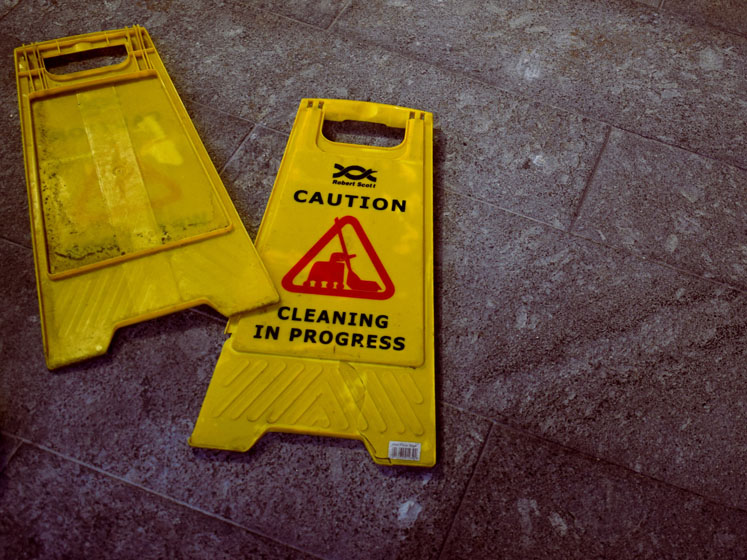Despite it being a frequent misconception that accidental injuries at work are the most common safety misstep, occupational hazardous chemical exposure is the greatest contributor to workplace fatalities.
Currently, chemical product exposure ranks as the main contributor to health problems that lower quality of life; and, when incidents arise, it is often because the existing culture is ineffective at keeping people safe from harm.
Either within an organisation or as an external consultant, winning hearts and minds can be a challenging task for a health and safety professional. It’s often the case that too much lip-service is given, with senior management signposting health and safety as a priority but being too busy to engage with the process of implementing it.
Employers in the chemical industry are acutely aware of the need to protect their staff from the effects of hazardous chemical exposure. However, I wonder how many have successfully implemented a truly participation-based chemical safety culture?
A more positive safety culture, in which success is rewarded and positive news stories circulated, encourages and incentivises employees to take an active role in safety outcomes. This will ensure that the journey is steered away from static quarterly reports — and dictating to staff — to a company wide conversation about health and safety.
A participation-led culture fosters a mature observational health and safety protocol, giving everyone in the organisation a way to speak up.
Transforming the existing situation to achieve something fit-for-purpose requires consistency and an ongoing targeted approach. Change takes time and requires constant communication and message reinforcement to employees at all levels. Fundamentally, embedding a safety culture, supported with the latest digital tools to manage best practice, can save lives. So, how is it done?
Employee engagement
It starts with a consistent and concerted drive towards best practice Starting at board level, it should be complemented by a highly visible C-suite appetite for uncompromising workplace safety. If you want universal buy-in to a participation-based safety culture, leaders need to set high standards from the outset, walk the walk and equip employees with all the tools, training and support they need to make safety a priority.

It also pays to involve employees in the safety decision making process instead of dictating new policies and priorities from on high. This will all help to build wider engagement with the safety culture you’re nurturing. Going further, businesses should continually invest in quality training to reassure employees that the management team is serious about their safety.
Careful thought about the reach of safety communication is important too; plenty of publically available resources mean that it’s not about reinventing the wheel but making people aware it exists. For instance, directing staff to the HSE website, which offers helpful guidance for those needing a refresher (regardless of position or experience within the business), is a simple but effective strategy.
Deploy digital tools
Organisations, particularly in the chemicals industry, are required to control compounds that are harmful to employee health according to the Control of Compounds Hazardous to Health (COSHH) legislation. Unsurprisingly, not following COSHH regulations puts workers at risk and could affect a company’s productivity, earnings and reputation. Therefore, it’s vital to manage safety risk assessments and chemical reporting with the utmost diligence.
A participation-based safety culture will be more likely to succeed if the latest digital tools are deployed to manage chemical safety documents, training schedules and protocols. Specialist EHS (Environmental Health and Safety) software is available that will help teams to take control of Safety Data Sheet (SDS) Management and COSHH risk assessment reporting. It’s far easier to work collaboratively across multiple departments with these tech solutions in place.
Nowadays, the majority of SDS can be managed online and the use of mobile app-based cloud technology encourages employees to manage SDS data, identify hazards and access accurate information in real-time.1 This ensures that strict safety standards are upheld day in/day out regardless of location on and off site.
Strong reporting system
A 2019 report from the European Chemical Agency revealed that 44% of dangerous mixtures violate categorisation and labelling rules.2 Clearly, chemical manufacturers must keep up with regulations and hazards owing to the rapidly changing global chemical regulatory environment.
No one is immune to making mistakes, so businesses should look to reduce risk whenever possible. That’s why a hierarchy of control is needed, ideally centrally managed via a digital reporting system. This involves centralised records of risk assessments, reporting of risk elimination, substitution, engineering controls, administration controls and PPE.

A systematic approach to working through the stages is required, alongside regular documented reviews. To help achieve this, create a positive reporting culture in which people can flag and log near misses or accidents — knowing that managers will listen and act on what they are told.
EcoOnline’s EHS software offers anonymous reporting of incidents, ensuring that everyone feels able to speak up. If something is identified as risky, colleagues should feel comfortable to call it out and ensure that the hazard is not found elsewhere. Once again, inform those involved of changes made and of any necessary training that needs to happen.
Celebrate success
Don’t jump to any conclusions about how well COSHH policy is being observed by a long-serving lab manager. Laws change and workplace practices evolve. Your safety culture must be adaptable, fluid and able to accommodate the changing demands of chemical safety management.
Why not also celebrate the success of those doing the right thing? Businesses are wise to recognise team members who perform well in their day-to-day work, so it’s a great idea to reward or commend those who have achieved safety accomplishments too. We need to be as close to zero risk as we can be, and this requires championing the behaviours that will make a difference to everyone’s well-being and incentivise them towards best practice.
Ultimately, I believe the single most crucial action that businesses can take to lower accidents or fatalities is to create a strong participation-led safety culture in the workplace. Injuries and illnesses at work impact a businesses’ bottom line, notwithstanding the fact that employers have a duty of care to pursue an exemplary record of safety and employee well-being.
Businesses that set up reliable management and safety procedures can lessen the risk to their personnel. If those of us working in the hazardous chemical sector are indeed serious about staff safety, then fostering an environment in which employees participate in the safety culture could greatly reduce the number of injuries and, ultimately, be the difference between life and death. Safe work improves the bottom line and creates job security for everyone.
References
- www.ecoonline.com/chemical-safety/sds-management-software.
- https://echa.europa.eu/-/44-of-hazardous-mixtures-not-compliant-with-classification-and-labelling-obligations.




